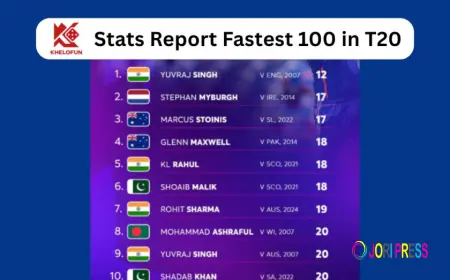Do you want to trade at lightning speed? Use Sniper Bot.
But speed alone isn’t enough; a successful sniper bot combines low latency, thoughtful signal design, disciplined risk controls, and operational resilience.

In fast-moving markets, being first matters. A sniper bot is an automated trading tool designed to find and act on highly time-sensitive opportunities with millisecond precision. Whether you’re participating in token launches, capturing brief cross-exchange inefficiencies, or reacting to event-driven price swings, a well-designed sniper bot turns fleeting windows into repeatable outcomes. But speed alone isn’t enough; a successful sniper bot combines low latency, thoughtful signal design, disciplined risk controls, and operational resilience.
What a sniper bot actually does
At its core, a sniper bot watches market events and executes orders faster than any human can. Unlike general trading bots that follow trends or indicators over longer timeframes, a sniper bot hunts specific micro-opportunities: tiny price spreads, early liquidity gaps on newly listed assets, or short-lived arbitrage across venues. It’s less about predicting the future and more about acting on present inefficiencies before others do.
Key activities a sniper bot performs:
-
Continuous order-book and trade feed scanning across multiple venues.
-
Real-time decision logic that triggers entry/exit within milliseconds.
-
Instant order placement with pre-signed credentials to remove human latency.
-
Immediate verification of fills and fast settlements or hedging actions.
Why speed matters — and what “fast” really means
In many sniper scenarios, the difference between profit and loss is measured in single-digit milliseconds. Think of two exchanges where the same token briefly trades at slightly different prices. That gap might exist for 500 ms or less. A bot that takes 1,000 ms to react will miss it; one that reacts in 50–200 ms can capture it reliably.
Speed is multi-dimensional:
-
Data latency — how quickly the bot receives market updates.
-
Decision latency — the time taken to evaluate signals and choose an action.
-
Execution latency — how fast the order reaches the exchange and gets accepted.
Optimizing across all three is essential. Improving only one area rarely yields consistent advantage.
Building blocks of a high-performing sniper bot
-
Low-latency data feeds — colocated or proxied feeds with minimal hops reduce delay.
-
Efficient execution paths — using lightweight, compiled runtimes and pre-warmed sessions minimizes decision and handshake time.
-
Proximity hosting — placing servers physically close to exchange nodes cuts network round-trip time.
-
Pre-signed orders — storing cryptographic approvals so orders can be submitted without lengthy on-the-fly signing.
-
Smart throttling — rate limits and anti-spamming rules prevent bans and ensure sustainable operation.
-
Observability — structured logs and millisecond metrics are vital for diagnosing missed windows and improving conversion rates.
Signal design: precise, testable, measurable
A sniper bot’s signals should be deterministic and quantifiable. Vague heuristics produce false positives and waste execution budget. Good signal design uses concrete, testable rules such as:
-
Execute when spread ≥ X AND estimated slippage ≤ Y AND node latency ≤ Z ms.
-
Trigger only for pair liquidity > N and order-book depth threshold M.
-
Abort if cancellation confirmation is not received within T ms.
Every signal must record metadata so you can compute conversion (signal → execution → realized P&L) and optimize what actually converts to profit.
Risk controls that protect capital
High speed amplifies both profits and mistakes. Effective sniper bots bake in safety controls:
-
Single-trade caps and portfolio exposure limits.
-
Automatic cancellations on latency spikes or partial fills beyond threshold.
-
“Kill switches” that halt the strategy under extreme conditions or connectivity loss.
-
Post-trade reconciliation to prevent drift between on-exchange balances and internal state.
These measures prevent small errors from snowballing into major losses.
Deployment strategy: staged and measured
Rush to production at your peril. A prudent rollout follows stages:
-
Backtest with order-book replay — simulate real queuing and execution.
-
Paper trading against live feeds — test operational behavior without capital at risk.
-
Small live rollouts — deploy minimal capital and scale only after consistent performance.
-
Incremental scaling — add venues and capital as conversion metrics validate the strategy.
This staged approach preserves capital while shortening time to meaningful results.
Compliance and ethics
Sniper bots sit in a sensitive area: speed can be mistaken for manipulative behavior if not controlled. Ensure your strategy avoids spoofing, wash trades, or market-manipulative patterns. Maintain audit logs, and apply KYC/AML and exchange policy constraints where relevant. Ethical and compliant design protects your operation and reputation as you scale.
Who benefits most from sniper bots?
Sniper bots are most useful for:
-
Market makers and prop desks seeking micro-profits across venues.
-
Institutional traders participating in large token launches who need fast execution without slippage.
-
Sophisticated retail traders who can manage the technical and operational demands.
They are less suitable for casual traders unless supported by expert development and operational oversight.
Final thought: speed with discipline
If you want to trade at lightning speed, a sniper bot gives you the technical edge but only when speed is paired with discipline. Low latency, measurable signals, strict risk rules, and staged deployment turn fleeting opportunities into compounding gains. In volatile markets, success rarely belongs to the fastest alone; it belongs to the fastest who also design, test, and govern their strategies responsibly.
What's Your Reaction?
 Like
0
Like
0
 Dislike
0
Dislike
0
 Love
0
Love
0
 Funny
0
Funny
0
 Angry
0
Angry
0
 Sad
0
Sad
0
 Wow
0
Wow
0

















































